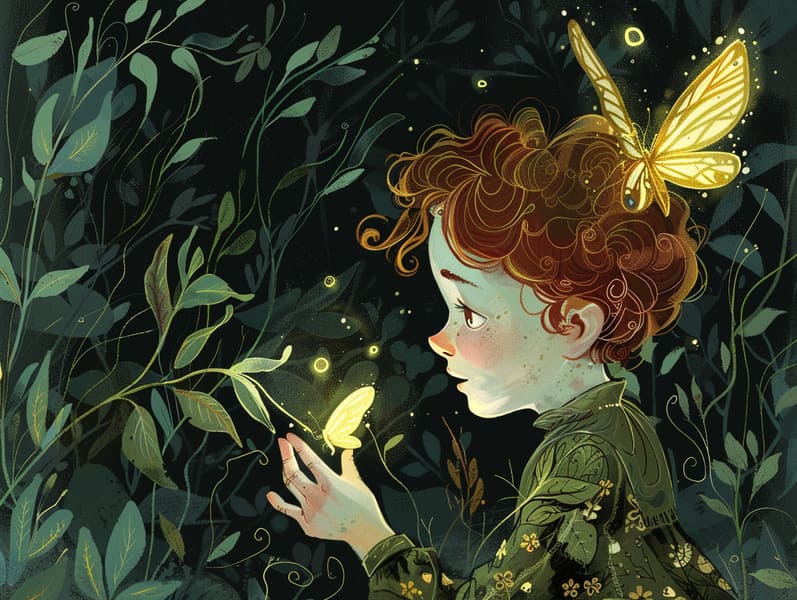
Timeless fairy tales have long histories. These tales have been told from one generation to the next centuries before they were ever inscribed. They came from a variety of traditions, including African traditions. They were initially transmitted among mature audiences, often carrying themes and messages related to the societal norms and beliefs of the time.
The famous Grimm duo, the two Grimm brothers, were among the first to compile many of these beloved tales. Their anthology, "Grimm's Children's Stories," included narratives like "Cinderella," "The Bread Crumb Trail," and "Snow-White and Rose-Red," which have since become cornerstones in the world of famous fairy tales. Similarly, Hans Christian Andersen's delightful narratives, such as "The Story of the Little Mermaid," and "The Ugly Duckling," have gained the love worldwide, guaranteeing their place in the pantheon of classic fairy tales.
Though they are old, these stories remain as applicable as ever, especially as nighttime stories for kids. These whimsical stories are now available in diverse formats, including gorgeously illustrated books, magical animations, and online fairy tales.
Their lasting presence can be traced to several charming aspects:
Moral Lessons: Classic fairy tales often convey important moral lessons. Narratives like "The Tale of the Boy Who Cried Wolf" teach the virtue of truthfulness, while "The Tale of the Tortoise and the Hare" show the benefits of determination and humbleness. These tales offer kids clear distinctions between truth and falsehood, shaping their moral compass in a soft yet meaningful way.
Kindness and Comprehension: Ancient fairy tales frequently illustrate personalities facing struggles and tests, fostering young readers to relate with their struggles and rally behind their triumphs. For instance, "The Tale of Beauty and the Beast" illustrates the merit of looking deeper to realize the real character of a soul, encouraging sympathy and insight.
Cultural Knowledge: Many old fairy tales are steeped in the cultural contexts from which they came. Understanding these narratives can provide fascinating glimpses into different backgrounds, encouraging a sense of global understanding and perception.
Fantasy and Imagination: The fantastical elements in classic fairy tales—supernatural elements—provoke children’s innovations. These stories guide readers to extraordinary realms, engendering imaginative thinking and a sense of enchantment that stays a lifetime.
Timeless fairy tales are not only magical but also instructive. They serve as entrancing tools in fostering various brain and heart skills in kids. When fairy tales are spoken out loud, they advance language proficiency by showing new phrases and intricate sentence structures. This practice also boosts listening abilities and concentration, as the young follow the story, excited to see what happens next.
Furthermore, conversing about the themes and characters of classic fairy tales can nurture problem-solving abilities and analytical skills. Young readers are shown to discover patterns, predict happenings, and catch on to cause and effect. These explorations also contribute to young ones express their thoughts and feelings, strengthening their emotional intelligence.
In today’s information age, the abundance of free fairy tales online has made these stories more within reach than ever. Digital sites and applications feature extensive collections of children's fairy tales that can be explored or played anytime, anywhere. Fairy tales narrated are particularly widespread, giving an captivating way for children to immerse in these captivating stories. Read-aloud books and spoken videos bring characters and settings to life, often complemented by captivating sound effects and background music that raise the story journey.
The unending appeal of old fairy tales lies in their ability to shift to changing times while holding onto their central messages. Contemporary reimaginings of these tales often present more representative characters and modern settings, making them accessible to today’s audience. However, the underlying themes of valour, kindheartedness, and righteousness remain unchanged, continuing to influence young listeners of all ages.
Old fairy tales also offer a sense of familiarity and familiarity. They grant a tidy narrative with a clear beginning, middle, and end, often wrapping up with the wrap-up of conflicts and the triumph of right over wrong. This steadiness can be easing for young readers, spreading a sense of invariability in an ever-changing world.
Ancient fairy tales continue to delight and teach new generations, maintaining their elegance and relevance in modern society. As children's bedtime stories, they afford a perfect blend of wonder and wisdom, facilitating moral values, empathy, and creativity. The abundance of internet fairy tales and the sought after status of fairy tales narrated guarantee that these traditional fairy tales remain reachable to new generations.
By retaining and recounting these stories, we continue to treasure the rich tapestry of cultural heritage and cultural heritage. Whether you are delving into a vividly illustrated book, seeing a virtual collection, or listening to an spoken story, the wonder of Grimm's fairy tales is always within reach. These narratives point out of the eternal influence of storytelling and its ability to unite us across eras and regions.
Be it you are enjoying a richly illustrated book, accessing a internet collection, or listening via an audio story, the splendor of Grimm's fairy tales is always within reach.
These narratives demonstrate of the steadfast effect of narratives and its ability to gather us across centuries and lands, creating a bond website that enchants and educates alike.